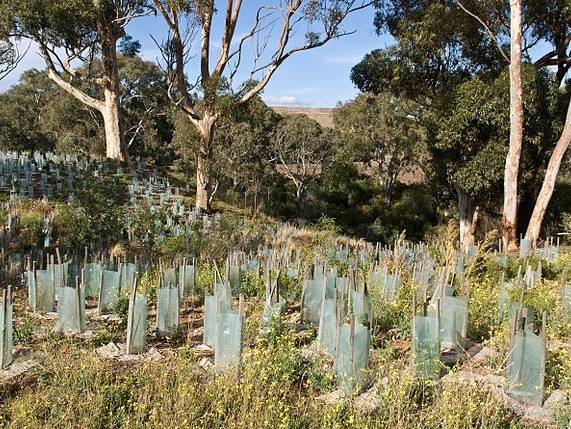
Revegetation
Asset Type : Natural
Water Classification:
Stormwater
Source Water Protection
Source Water Recharge
Stormwater
Source Water Protection
Source Water Recharge
Construction Rank :
2
O&M Rank :
2
How it Works : Revegetation is the process of replanting (trees, shrubs, groundcovers and other plants) and rebuilding the soil of disturbed land. This can either be a natural process or a manmade process.
O&M Required : Site maintenance for revegetation includes irrigation, weed control and possibly maintaining plant shelters. Irrigation may be short term (depending on climate) to make sure the plants can establish themselves.
Design Considerations : When planning for revegetation consider soil conditions, plant species and climate. It is always best to use plants that are sourced locally. Also consider the purpose of the proposed planting. Will it be for shade, wildlife habitat or amenity? Answering that question will help determine the location, shape, composition and size of your revegetation. It is also important to consider land uses that may affect plant establishment. Land uses such as grazing and off-road vehicles can reduce the success of revegetation. Avoid planting during seasons where weather can be extreme and try to plant after a rain event when the soil is moist.
Costs : Cost will vary widely based on site terrain, location, size, landscape design and specifications.
Benefits : The benefits of revegetation include new habitat, reduction in erosion, increased soil infiltration and groundwater recharge, enhanced biodiversity and pollutant capture and filtration.
Image by: Nick Pitsas via https://commons.wikimedia.org/wiki/File:CSIRO_ScienceImage_924_Revegetation_project.jpg